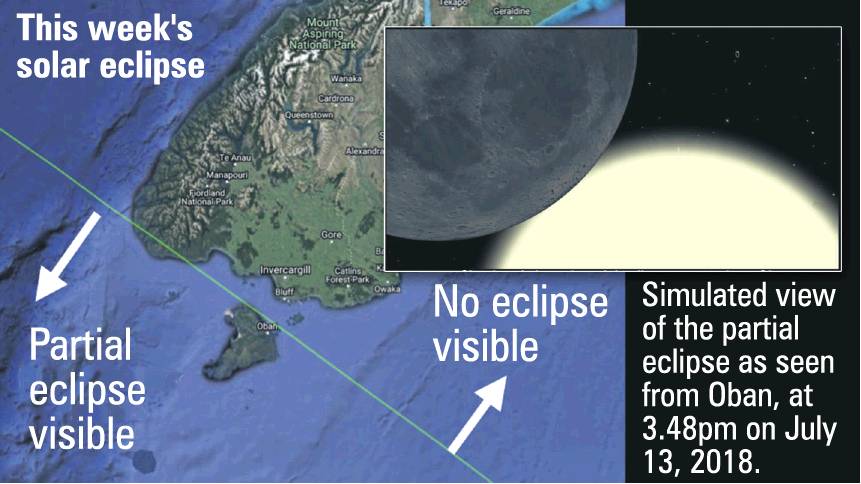
Ian Griffin's heading to the deep south to watch the moon partially eclipse the sun.
What will you be doing late next Friday afternoon?
For once, I don’t need a diary to know exactly where I will be. That’s because, after speaking to the Invercargill U3A at 10am, I will be catching the 1pm flight from Invercargill to Stewart Island in order to witness a rather rare and probably almost invisible celestial alignment.
By 3.44pm, I plan to have my camera pointing at the sun, from a suitable spot somewhere near Oban. For the next eight minutes, I hope to observe a brief partial solar eclipse, during which the moon’s dark disc will glide across and obscure a tiny sliver of the sun’s northern limb.
I am sure that if I do manage to photograph this eclipse, it will almost certainly be the briefest and the most partial solar eclipse I will enjoy during my lifetime.
Partial eclipses of the sun are fairly common. During these events (which can only occur at new moon), the moon, Sun and Earth don’t align in a perfectly straight line, and only the outer part of the moon’s shadow, called the penumbra, falls on Earth. To observers on the ground, it appears that the moon has taken a bite out of the sun.
The best place to see Friday’s eclipse is, in fact, on the Antarctic continent, from where approximately 33% of the sun will be hidden by the moon at mid-eclipse. Observers in Tasmania, who are close to the edge of the moon’s shadow, will see just over 3% of the sun obscured.
Stewart Island is right at the very edge of the moon’s shadow for this eclipse and, because of this, a mere 0.012% of the sun will be obscured. This will be almost impossible to see. It will also require a special solar telescope that allows me to photograph the sun safely.
You may ask, why am I doing this? Why travel all the way to Rakiura, where it’s almost certain to be cloudy, to witness an almost invisible event lasting less than eight minutes? That, dear reader, is the addictive power of astronomy!












